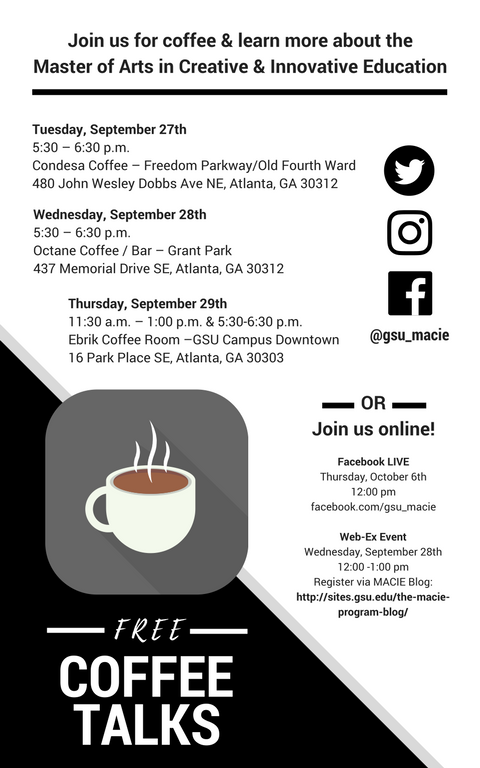
The Washington Post recently published an article indicating a “Great Creative Divide” in the United States: people living in the Southern portion of the country were less likely to be involved in the arts than those living in the Northern portion. While we see creativity as encompassing much more than just the arts, it’s interesting to dig a little deeper into the data behind the WAPO article to get a snapshot of Georgians’ arts participation. Although the data doesn’t present a complete picture, it can point us in new directions as we consider children’s creative lives—or perhaps recommit us to paths we are already on.
Here are the numbers for Georgia:
* Percent of U.S. Adults Who Attend Visual or Performing Arts Events or Go to the Movies by State in 2015
- Georgia: 57.6% (statistically less than U.S. average)
* Percent of U.S. Adults Who Attend Live Music, Theater, or Dance Performances by State in 2015
- Georgia: 20.8% (statistically less than U.S. average)
* Percent of U.S Adults Who Attend Art Exhibits by State in 2015
- Georgia: 9.5% (statistically less than U.S. average)
* Percent of U.S. Adults Who Go to Movies by State in 2015
- Georgia: 53.3% (not statistically different from U.S. average)
* Percent of U.S. Adults Who Visit Buildings, Neighborhoods, Parks, and Other Sites for Their Historic or Design Value by States in 2015
- Georgia: 20.3% (statistically less than U.S. average)
* Percent of U.S. Adults Who Read Literature (Poetry, Plays, Short Stories, or Novels) by State in 2015
- Georgia: 36.8% (not statistically different from U.S. average)
* Percent of U.S. Adults Who Personally Perform of Create Artworks by State in 2014
- Georgia: 34.2% (statistically less than U.S. average)
* Percent of U.S Adults Who Use TV, Radio, and /or Internet to Consume Art or Arts Programming by State in 2012
- Georgia: 50% (statistically less than U.S. average)
Why are there variations in arts participation across states? The answer, of course, isn’t simple, but the National Endowment for the Arts, which published the data, links participation in the arts to education and poverty, as well as availability and access to arts organizations. The NEA also draws “strong association” between adults’ likelihood of attending arts events and their experiences with the arts as children. “Adults who visited an art museum as a child were 4.8 times more likely to visit an art museum or gallery as an adult,” the report states.
While creativity isn’t limited to the arts, the arts certainly are crucial components of a creative and innovative education. Perhaps the first step in providing children with more experiences with creativity in general and the arts in particular is to work together as adults to begin that cultivation.



